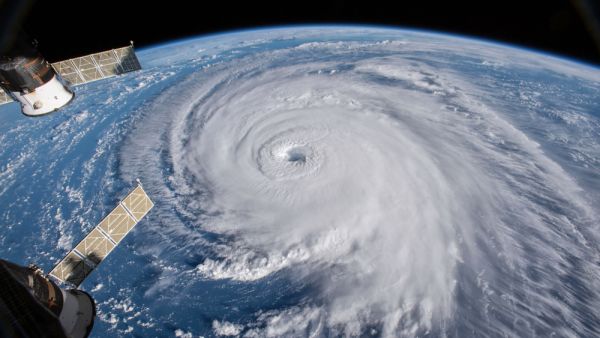Stronger wind speeds, more rain, and worsened storm surge add up to more potential destruction. Increasingly destructive hurricanes are putting a growing number of people in danger.
Although scientists are uncertain whether climate change will lead to an increase in the number of hurricanes, there is more confidence that warmer ocean temperatures and higher sea levels are expected to intensify their intensity and impacts.
In the same week that Tropical Storm Fred caused catastrophic flooding in North Carolina, and Hurricane Grace made its second landfall in Mexico, Hurricane Henri is barreling toward New England, where it's expected to be the first to make landfall there in 30 years.
CNN
There aren't more of the storms now than there were roughly 150 years ago, a study suggests. Today's hurricanes may not be becoming more frequent, but they’re still more dangerous.
BREAKING: Hurricane Ida has strengthened into a major hurricane early Sunday morning. The U.S. National Hurricane Center says the system has maximum sustained winds of 115 mph, which makes it a Category 3 hurricane. https://t.co/BE8zyIFgP8
— The Associated Press (@AP) August 29, 2021
Hurricanes are the most violent storms on Earth. They form near the equator over warm ocean waters. Actually, the term hurricane is used only for the large storms that form over the Atlantic Ocean or the eastern Pacific Ocean.
Hurricanes are tropical storms that form in the Atlantic Ocean with wind speeds of at least 119 kilometers per hour. Hurricanes have three main parts, the calm eye in the center, the eyewall where the winds and rains are the strongest, and the rain bands which spin out from the center and give the storm its size.
The generic, scientific term for these storms, wherever they occur, is tropical cyclones. Other names they are given, depending on where in the world they are born, are typhoons, cyclones, severe tropical cyclones, or severe cyclonic storms. Whatever they are called, the same forces and conditions are at work in forming these giant storms, any of which can cause damage or devastation when they hit land where people live.
Climate change is helping Atlantic hurricanes pack more of a punch, making them rainier, intensifying them faster, and helping the storms linger longer even after landfall.
The proportion of high-intensity hurricanes has increased due to warmer global temperatures, according to a UN climate.
Imagery captured by a NOAA satellite shows the center of Hurricane Ida, which was “quickly intensifying” in the Gulf of Mexico on Saturday afternoon, the NOAA said. The storm is forecasted to reach Category 4 before it hits the Gulf Coast tomorrow. https://t.co/VWeN0MOG8v pic.twitter.com/mRm3oUzJ6Y
— CBS News (@CBSNews) August 29, 2021
"Hurricane Season" begins on June 1 and ends on November 30, although hurricanes can, and have, occurred outside of this time frame.
"We have good confidence that greenhouse warming increases the maximum wind intensity that tropical cyclones can achieve," Jim Kossin, senior scientist with the Climate Service, an organization that provides climate risk modeling and analytics to governments and businesses, told CNN.
There’s now evidence that the unnatural effects of human-caused global warming are already making hurricanes stronger and more destructive. The latest research shows the trend is likely to continue as long as the climate continues to warm.
Scientists strive to understand the mechanics of these complex storms in order to protect people, property, commerce, and natural resources. They continuing to refine our understanding of how global warming affects hurricane activity.
Authorities warn Hurricane Ida could be one of the most powerful to hit Louisiana in more than a century. @AmeliaAdams9 #9News pic.twitter.com/DaxFCjvmq1
— 9News Australia (@9NewsAUS) August 29, 2021
The connection between climate change and hurricane frequency is less straightforward. It is likely the number of storms will remain the same or even decrease, with the primary increase being the most extreme storms.







